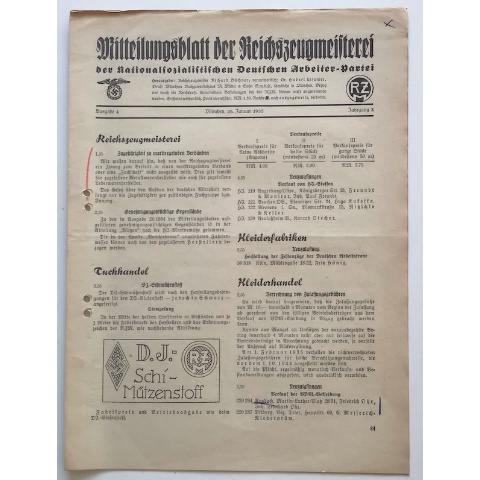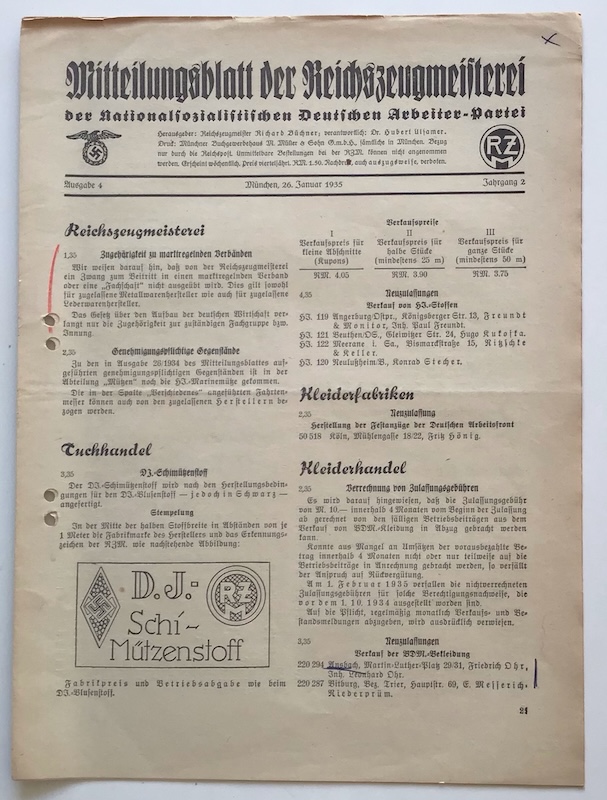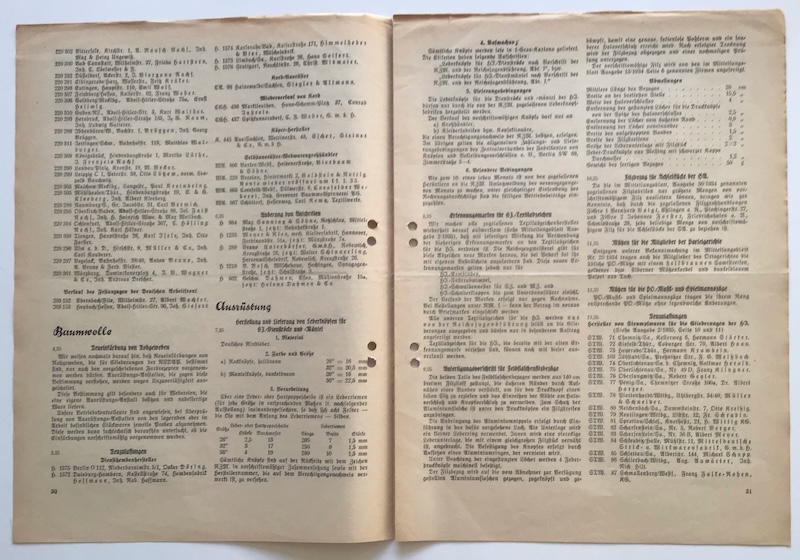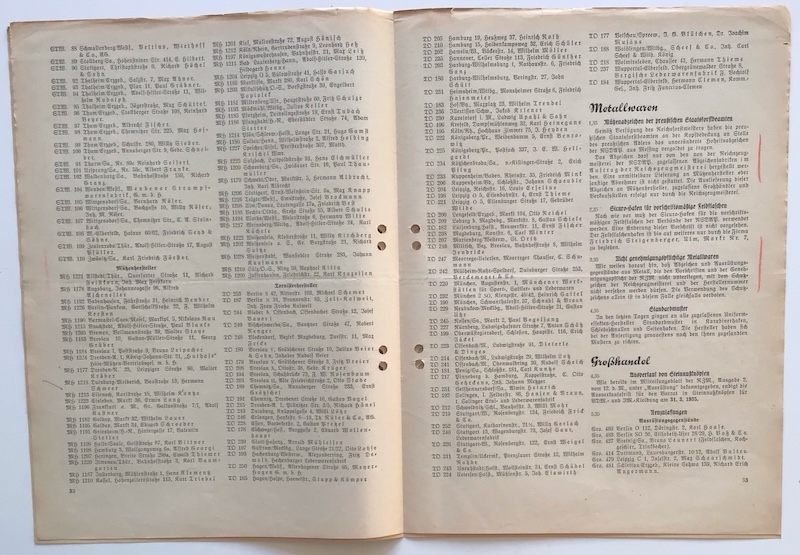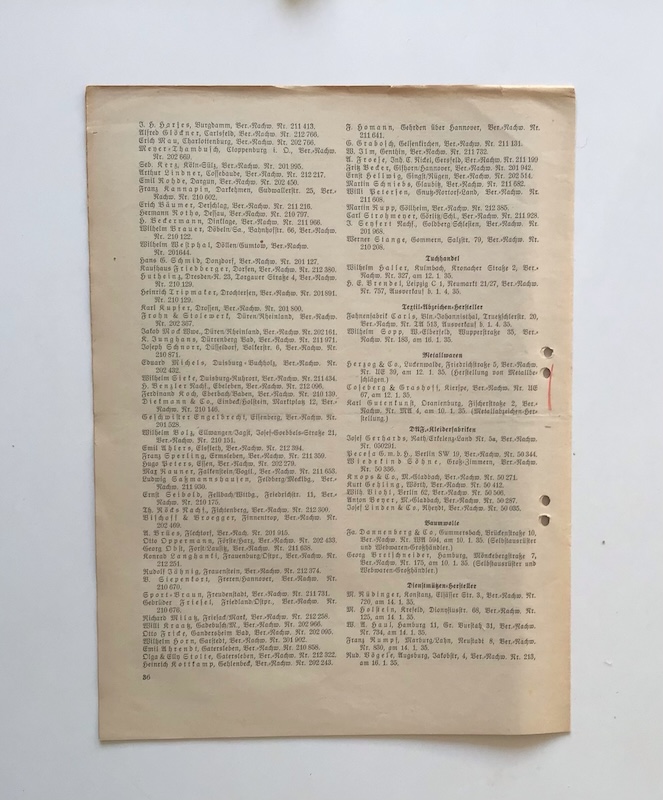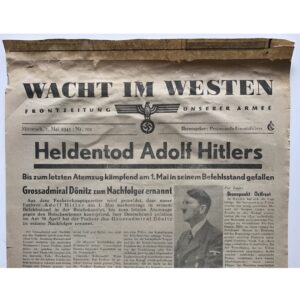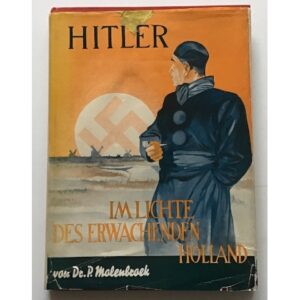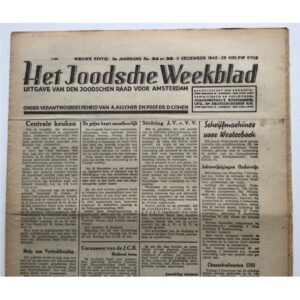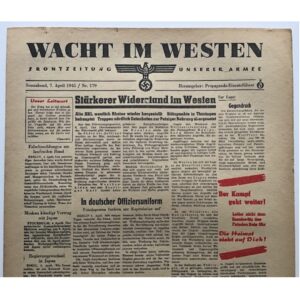Reichszeugmeisterei, # 4, – 1935
The Reichszeugmeisterei: Crafting the Identity of the NSDAP and its Organizations
The Reichszeugmeisterei (Quartermaster’s Office) was located in Munich and responsible for all uniforms, uniform parts, and equipment for all sections of the NSDAP. For example: SS, SA, HJ, BDM, NSKK, etc.
BULLETIN of the REICHSZEUGMEISTEREI, Issue 4, 26 January, Year 2
The Reichszeugmeisterei
The Reichszeugmeisterei, often abbreviated as RZM, was a pivotal institution in Nazi Germany, primarily responsible for overseeing the production and quality control of all uniforms, regalia, and equipment for the various branches and organizations of the National Socialist German Workers' Party (NSDAP). Established in Munich, the RZM played a crucial role in standardizing the appearance and outfitting of groups such as the Schutzstaffel (SS), Sturmabteilung (SA), Hitler Youth (HJ), Bund Deutscher Mädel (BDM), and the National Socialist Motor Corps (NSKK).
Historical Significance and Role
Founded in its early days to ensure a coherent and disciplined visual identity across Nazi organizations, the Reichszeugmeisterei issued strict guidelines and regulations concerning the design, material quality, and distribution of uniforms and insignia. Each article of clothing and gear was meticulously crafted to meet the standards set by the RZM, thus fostering a unified and imposing image among its members.
The headquarters in Munich acted as the central hub where designs were approved and overseen. Local production units and licensed manufacturers were granted RZM permits, ensuring they adhered to the quality and design specifications laid out by the central office. This systematic approach helped maintain a sense of order and consistency amid the varied and widespread organizations within the NSDAP.
Importance for Collectors and Historians
For collectors and historians, the RZM and its extensive catalog serve as a vital source of information and authenticity. Collectors of WWII militaria, specifically those focusing on Nazi regalia and uniforms, often rely on the detailed records and identifiers established by the RZM. Items stamped with the RZM logo or code are considered genuine, as they confirm adherence to the prescribed standards of the time.
Contributions to the War Effort
Beyond mere aesthetics, the Reichszeugmeisterei's contributions extended to the logistical support of the Nazi war effort. By ensuring that all field units were uniformly equipped, the RZM indirectly influenced the efficiency and readiness of the armed forces. The standardized equipment facilitated seamless integration of new recruits and streamlined logistics across various divisions of the military and paramilitary organizations.
Legacy and Controversies
While the RZM’s role was primarily logistical and administrative, its legacy is marred by its association with the atrocities committed by the Third Reich. The uniforms and symbols it produced became synonymous with oppression and terror. Modern-day examination of the RZM's work provides insight into how the visual and material culture of the Nazi regime played a role in its propaganda and psychological warfare.
For anyone studying this dark chapter of history, the Reichszeugmeisterei stands as a testament to the meticulous and controlled manner in which the Nazi regime sought to impose its ideology visually and materially.
Conclusion
The Reichszeugmeisterei, or RZM, was not just an administrative body; it was an essential cog in the machinery that maintained the outward appearance of Nazi Germany’s myriad organizations. Its influence extended beyond the production of uniforms and equipment, embedding itself as a critical element in the broader narrative of World War II. For collectors, historians, and educators, delving into the history of the RZM offers crucial insights into the operational and ideological underpinnings of the Nazi regime.
Extremely rare!
€ 35,00
1 in stock
1 in stock

